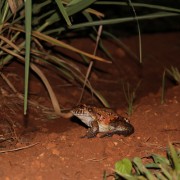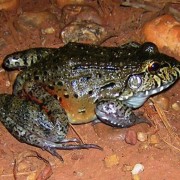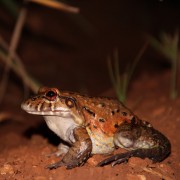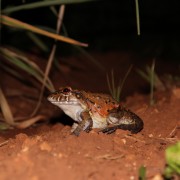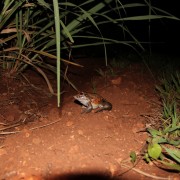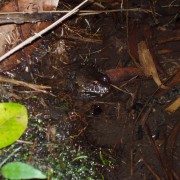Biodiversity
 Labyrinth Frog
Leptodactylus labyrinthicus | Spix, 1824
Labyrinth Frog
Leptodactylus labyrinthicus | Spix, 1824
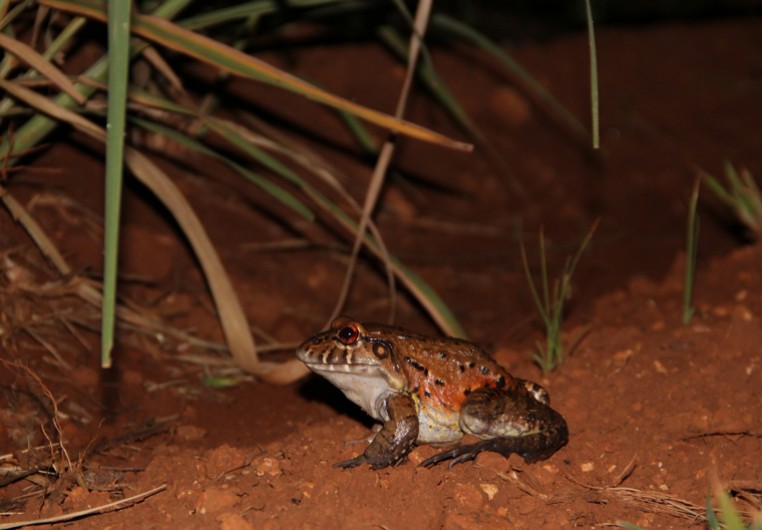
Characteristics: Large species measuring about 18cm in length. The "labyrinthicus" name is due to the fact that it has a great pair of timpani (eardrum membrane, labyrinth) clearly visible just behind and below its eyes. Juveniles have colors varying from dark green to brown, with dark spots and splashes of color on their backs with many visible glands and lumps. They are red or orangish on the inner thighs and sides of their bodies. Adults are almost completely red/orange and, as juveniles, have black stripes across their mouths and snouts. They exhibit sexual dimorphism, males are larger than females and have robust arms and thumbs specialized in grabbing the female to mate. Because it produces substances that are toxic and repulsive to most vertebrates, in addition to the red coloration in adults, this species is commonly known as pepper frog.
Distribution: Eastern Paraguay, Cochabamba, Santa Cruz, and Bolivia. Savannas, scrublands, and Southeastern Brazil.
Habitat: Open to forest formations in riparian and gallery forest edges.
Habits: Crepuscular, nocturnal, terrestrial, and aquatic. Commonly found on the banks of rivers, streams, lakes, ponds, wetlands, swamps, and marshes.
Diet: Insects, arthropods, and occasionally other frogs.
Breeding: Oviparous, these frogs spawn on the banks of temporary water bodies, protected by vegetation. They have an extended breeding period associated mainly with rainfall.
UFRA: Species seen in Organic sugarcane fields, Wetlands with herbaceous plants, Wetlands with riparian forests and Restored native forests.




